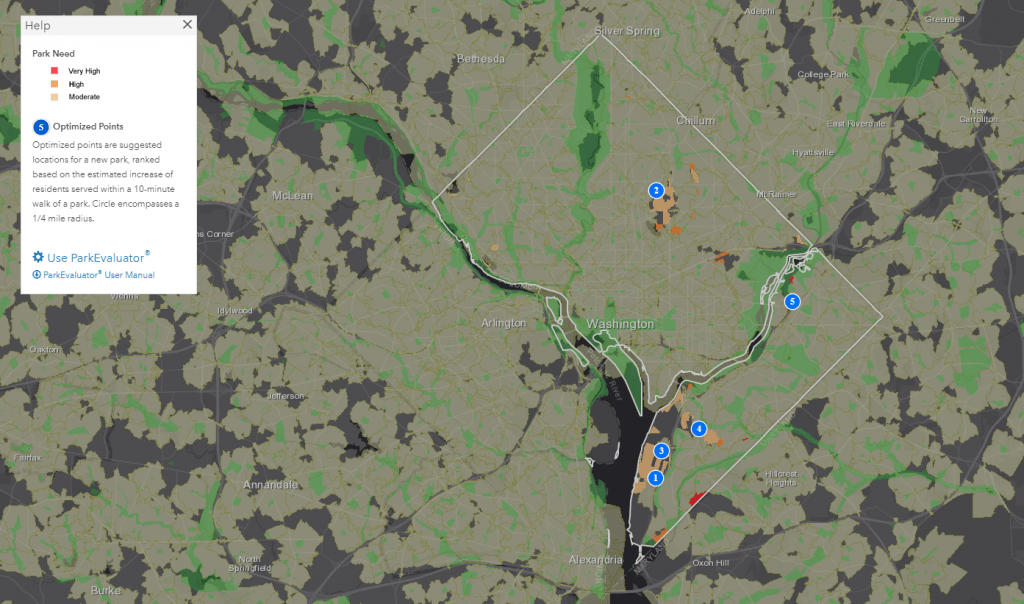Getting Outside in a Socially Distant World
7 April 2020As COVID-19 cases multiply in the U.S. and cities around the world grapple with strict guidelines to stay inside, I have been thinking more and more about the value of space. Getting outside for daily exercise is one of the few activities permissible under the “stay at home” order in my own city of Washington, DC. In my neighborhood, I escape my crowded apartment complex to the nearby park for a daily walk to get a much-needed dose of Vitamin D.
During these challenging times, finding ways to get outside is more important than ever.
In urban centers, which are generally harder hit by the virus than suburban or rural areas, park access tracks closely to demographic and class data. In my majority-Black, low- to middle-income neighborhood, access—especially quality of access—is more limited than just across the state line in the whiter, more affluent Maryland suburbs. My local park is small and full of stagnant pools of water and patchy tufts of grass, as opposed to the expansive forest of Rock Creek Park, the long stretch of green on the National Mall, or the beautiful walking and biking trails along the DC waterfront. In the nation’s capital, Black and Pacific Islander residents are more likely to live far from a park than any other ethnic group. These patterns hold true for communities of color across the U.S.
Despite its limitations, I am so thankful for my local park, and to live in the city ranked #1 on the Trust for Public Land’s ParkScore rankings: 98% of D.C. residents live within a 10-minute walk of a park or open space. Unfortunately, the nationwide average is more like 50%. What options are left for families when local playgrounds close as part of critical public health measures—and the only available open spaces are larger, greener parks far from where they live?

Building Solutions
COVID-19 has exacerbated many of the U.S.’s deeply embedded race and class inequities in profound and disturbing ways. I am proud to work with our partners on the Youth Outdoor Policy Partnership to find ways to address just one sliver of these inequities.
Meridian facilitates the Partnership, which aims to advance innovative policy solutions at the state level to get more kids outside, more often. We help our partners access implementable policy ideas and tools for use in their home states. First and foremost, we need to ensure that all kids have safe and equitable access to outdoor spaces.
Some policy ideas that seem all the more critical given our current reality include:
- Complete Streets Policies to ensure that all families have safe transportation routes to parks, whether that’s walking, biking, or busing.
- Green School Yards policies, which establish green space on school grounds rather than hardtop-only playgrounds.
- Policies to protect shared use of school facilities, such as removing liability concerns for after-hours use of school grounds so that everyone in the community can access these public spaces.
- Implementing the New Mexico Outdoor Equity Fund in more states, which provides funding through a state Office of Outdoor Recreation for outdoor education programming for underserved communities.
When we emerge from this pandemic—and from behind our computer screens—and begin to rebuild a more resilient society, I hope we can prioritize the importance of open space and the necessity of equitable access to the outdoors as fundamental components of community planning.
Youth Outdoor Policy Partnership
Check out how the Youth Outdoor Policy Partnership and Playbook are helping increase kids' equitable access to the outdoors.